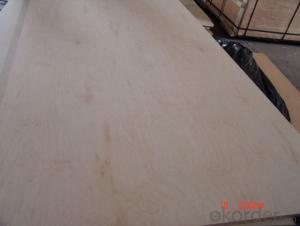Plywood is a versatile and widely used material in the construction and furniture industries. It’s made from thin layers of wood veneer, known as plies, which are glued together under heat and pressure. But with so many types of plywood available, choosing the right one for your project can be a daunting task. In this comprehensive guide, we’ll explore the different types of plywood, their properties, and uses, to help you make an informed decision.
Understanding Plywood Grades
Grades of plywood are determined by the quality of the wood veneer and the presence of defects. The higher the grade, the fewer defects and better the appearance. Here are the common grades you’ll encounter:
– A-grade: This is the highest quality plywood, with a smooth surface and minimal defects. It’s suitable for painting or staining.
– B-grade: This grade has some defects, such as knots and mineral streaks, but is still structurally sound. It’s often used for applications where the surface won’t be visible.
– C-grade: The lowest grade, with more visible defects. It’s typically used for internal construction or as a backing for other materials.
Types of Plywood
There are several types of plywood, each with its own unique properties and applications. Let’s dive into the most common ones:
– Birch Plywood: Known for its strength and durability, birch plywood is often used in furniture making and cabinetry. It has a consistent grain pattern, making it visually appealing.
– Marine Plywood: As the name suggests, marine plywood is designed for use in marine environments. It’s resistant to moisture and rot, making it ideal for boat building and outdoor projects.
– Softwood Plywood: Made from softwood species like pine or spruce, this type of plywood is lightweight and easy to work with. It’s commonly used for general construction and DIY projects.
– Hardwood Plywood: Durable and strong, hardwood plywood is suitable for heavy-duty applications. It’s often used in flooring, cabinetry, and high-end furniture.
– Veneer Plywood: This type of plywood has a thin layer of real wood veneer on the surface, providing a natural wood look. It’s often used for decorative purposes or when a real wood finish is desired.
– MDF (Medium Density Fiberboard): Although not technically plywood, MDF is often compared to it. It’s made from wood fibers and resin, making it affordable and easy to work with. However, it’s not as strong or durable as plywood.
Choosing the Right Plywood for Your Project
When selecting plywood for your project, consider the following factors:
1. Application: What will you be using the plywood for? Different types of plywood are better suited for different applications.
2. Strength and Durability: Consider the structural requirements of your project. Some plywood types are stronger and more durable than others.
3. Moisture Resistance: If your project will be exposed to moisture, choose a plywood that’s resistant to water damage.
4. Aesthetics: If the appearance of the plywood is important, select a grade and type that meets your design needs.
5. Cost: Plywood prices can vary greatly. Determine your budget and choose a plywood that offers the best value for your money.
Working with Plywood
Once you’ve chosen the right plywood for your project, it’s time to start working with it. Here are some tips to make the process easier:
– Use sharp tools to cut and shape plywood. Dull tools can cause tear-out and damage the surface.
– Sand the edges and surfaces of the plywood to smooth out any rough spots.
– When joining plywood pieces, use wood glue and screws for a strong bond.
– Finish the plywood with paint, stain, or a clear coat to protect it and enhance its appearance.
In conclusion, choosing the right plywood for your project involves understanding the different types, grades, and properties of plywood. By considering your project’s specific needs and requirements, you can select the most suitable plywood and achieve the best results. Remember to work with care and precision to ensure a professional finish.

